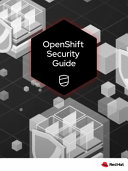The OpenShift Security Guide was created to help those in cloud infrastructure and security engineering roles address the many security challenges facing them. Cloud security is complex, and Red Hat understands that users need more than just guidance in technical system configurations. The authors have identified approaches that aid in the triaging of security trade-offs and risk, policy enforcement, reporting, and the validation of system configuration. Cloud infrastructure and security engineering roles are central to establishing and preserving security postures. It is the book’s intent to support these roles by providing the proper mixture of conceptual, organizational, and technical guidance, thereby increasing the security vigilance and effectiveness of those with such responsibilities. For the cloud security auditor, whether in an internal role or as a third-party assessment organization, this book intends to provide the technical guidance needed to verify, validate, and enforce security controls. For technology professionals charged with security policy management, this book should offer insight into related organizational policy, functional testing, and data stewardship tasks while augmenting knowledge in these areas. While the book speaks to OpenShift from a holistic infrastructure perspective, it does cover areas that application developers and reliability engineers may find valuable. With the ever evolving trends in container-based microservices, baking security into the continuous integration and delivery pipelines is a fundamental requirement. Build and runtime security features are discussed, and advantages of a secure container baseline image are covered as well. Readers are not expected to have expert-level knowledge of core OpenShift concepts. However, basic knowledge of Linux, Containers, and Kubernetes from a user or administrative perspective will certainly be useful, especially when reading through some of the technical implementation described in the chapters.

